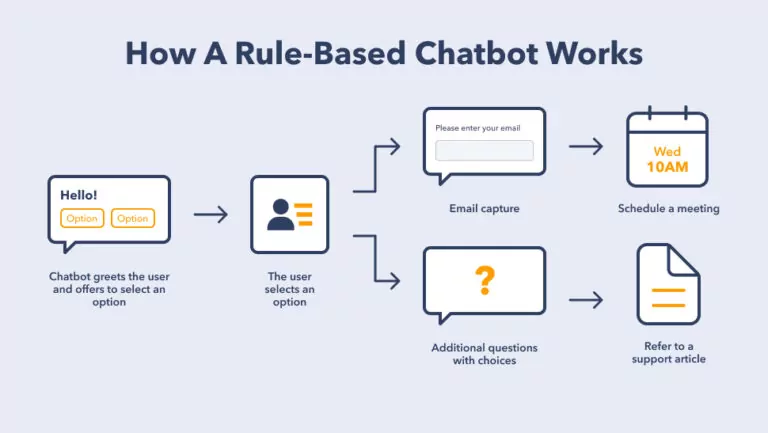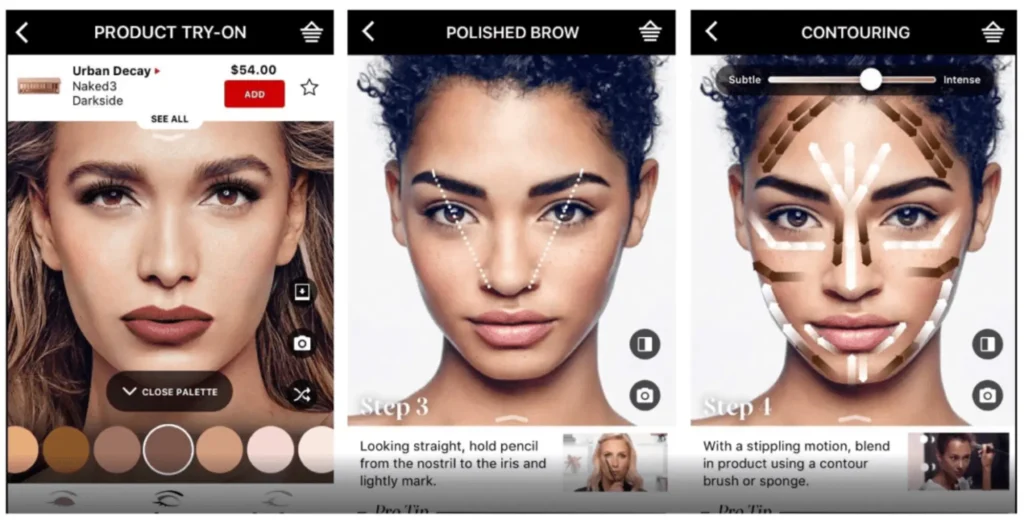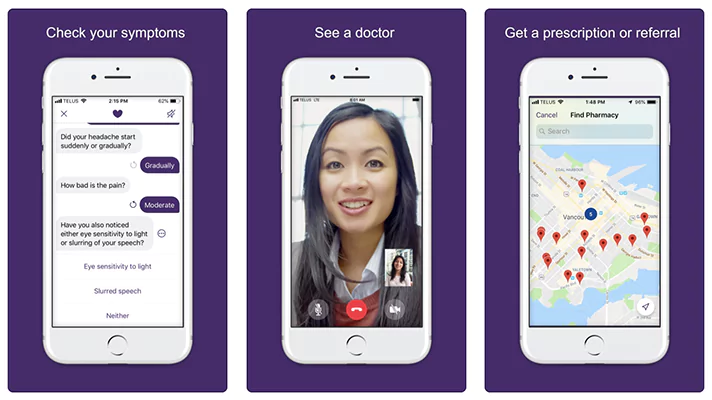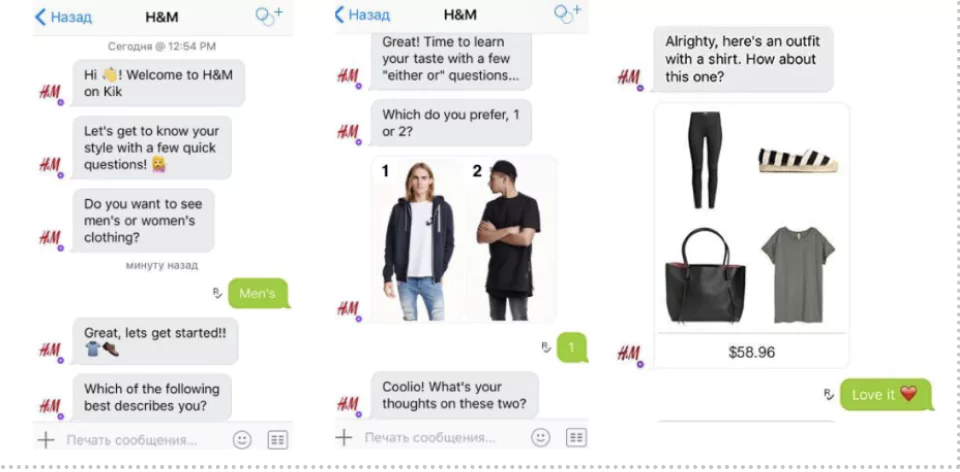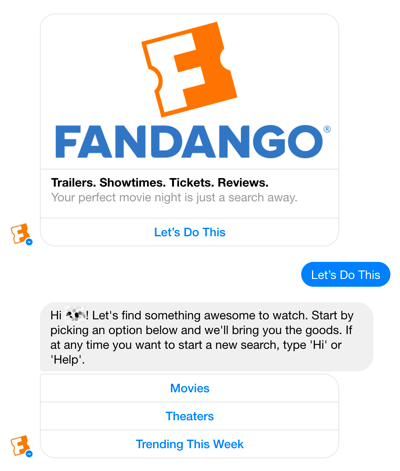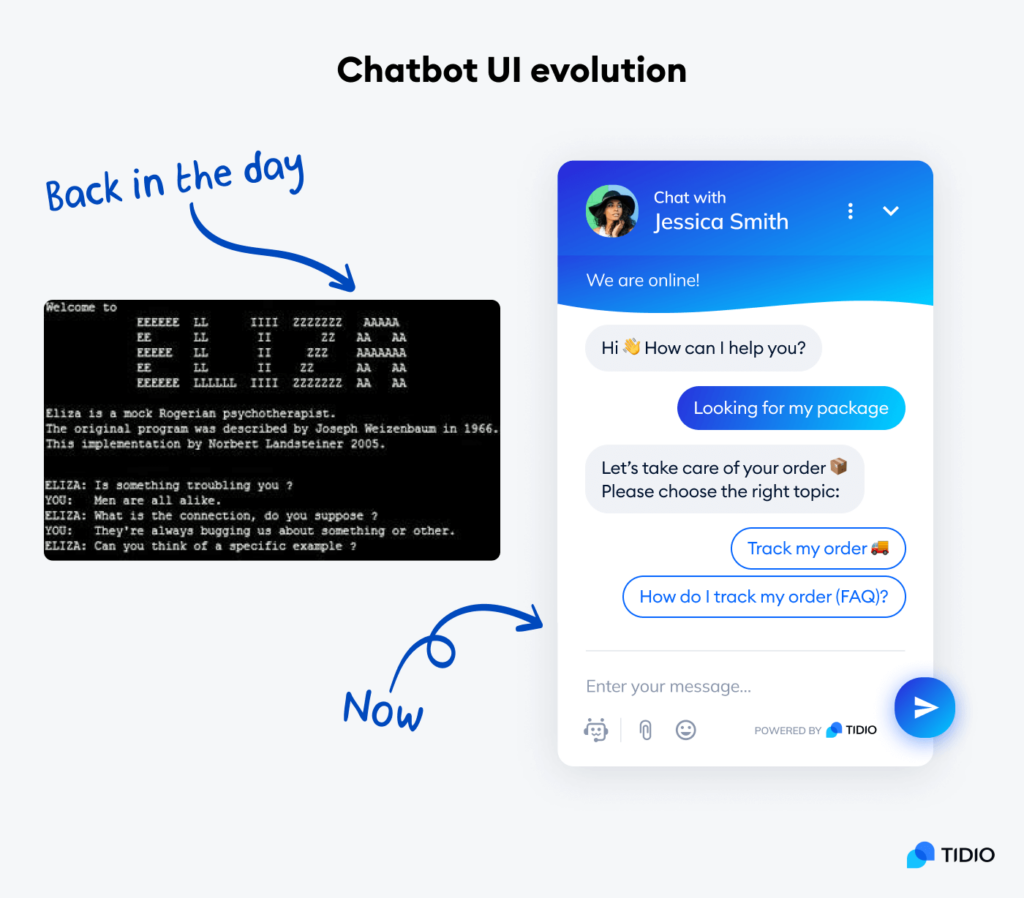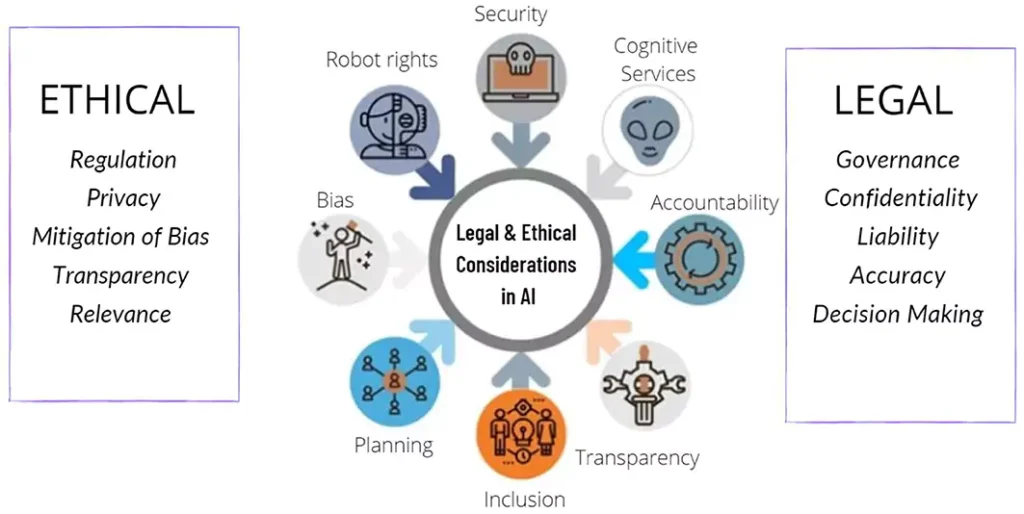In today’s fast-paced digital landscape, businesses are increasingly turning to AI chatbots to enhance customer interactions and streamline operations. With various types of chatbots and customization options available, navigating this evolving field can be challenging.
This blog explores the world of custom AI chatbots, covering their creation, customization, and the significant benefits they offer. Let’s dive into how these intelligent systems are shaping the future of digital interaction.
Understanding Different Types of Chatbots for Customization
Before diving into the creation of a custom AI chatbot, it’s essential to understand the different types of chatbots and how they can influence your customization efforts. Chatbots can generally be categorized into a few types, such as rule-based chatbots, AI-driven chatbots, and hybrid models. Each type serves different purposes and has distinct functionalities.
Rule-Based Chatbots
Rule-based chatbots follow predefined scripts and are best suited for handling straightforward queries. They operate based on a set of predetermined rules and are often used for simple customer service tasks, such as FAQs or basic information retrieval.
AI-Driven Chatbots
AI-driven chatbots leverage machine learning and natural language processing (NLP) to understand and respond to more complex interactions. They can adapt to user inputs, learn from conversations, and provide more dynamic and personalized responses. These chatbots are suitable for tasks that require deeper understanding and contextual awareness.
Hybrid Chatbots
Hybrid chatbots combine elements of both rule-based and AI-driven chatbots. They offer flexibility by handling simple queries through rule-based responses while utilizing AI capabilities for more complex interactions.
Hybrid chatbots can provide a balance between efficiency and depth in their interactions.
The choice of chatbot type will depend on your specific business requirements, the complexity of user queries, and the desired level of personalization. Understanding these types can help you make informed decisions when customizing your chatbot to meet your unique needs.
Understanding these types will help you determine the most suitable approach for your custom chatbot based on your specific needs and objectives.
How to Create a Custom Chatbot
Creating a custom AI chatbot begins with defining clear business objectives. Whether your goal is to enhance customer service, automate repetitive tasks, or drive sales, your chatbot’s design should align with these aims.
For example, if a retailer’s objective is to boost sales, the chatbot should be tailored to offer personalized product recommendations and exclusive promotions.
Once objectives are defined, the next step is selecting the appropriate technology and platforms. AI frameworks like TensorFlow and PyTorch provide the backbone for developing sophisticated chatbots, while platforms such as Dialogflow and Microsoft Bot Framework offer tools for building and managing these AI assistants. Your choice of technology should consider factors such as AI capabilities, NLP features, and integration options to ensure the chatbot performs effectively.

Designing Conversational Flows
Designing effective conversational flows is crucial for creating a chatbot that provides a seamless user experience. Start by mapping out various user scenarios and potential queries. This involves creating intuitive dialogue paths that guide users through their interactions with the chatbot in a natural and engaging manner.
Data collection plays a significant role in training your custom chatbot. Collecting high-quality, relevant data ensures that your chatbot can understand and respond to user inputs accurately.
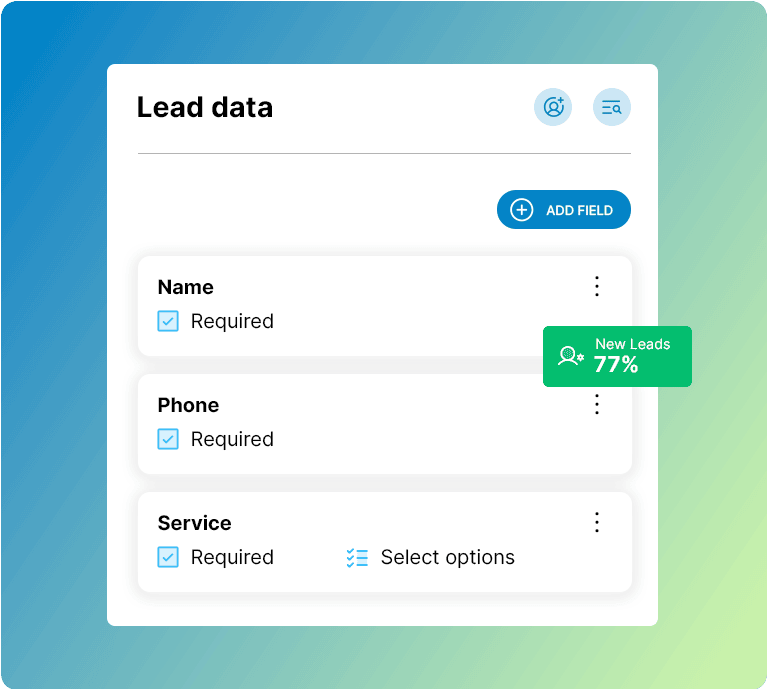
High-quality, relevant data allows Convert Chatbot to accurately understand and respond to user inputs.
Testing and refining your chatbot is essential to achieving optimal performance. Regular iterative testing, user feedback, and performance metrics will help you continuously improve the chatbot. By reviewing and enhancing the chatbot based on real-world interactions, you ensure it meets evolving user needs and business objectives effectively.
Types of Custom Chatbots in Action
Exploring detailed case studies of businesses that have successfully implemented custom chatbots can offer valuable insights. For example, a retail brand may have used a chatbot to handle customer inquiries, resulting in reduced response times and increased customer satisfaction.
Different industries leverage custom chatbots in unique ways. In healthcare, custom chatbot may assist with patient scheduling and provide health tips, while financial services custom chatbot can streamline customer support by handling routine queries and providing account information. Examining these examples highlights how chatbots address industry-specific challenges and drive positive business outcomes.
One real-world example is the implementation of a custom chatbot by Sephora, a leading beauty retailer. Sephora’s AI chatbot, named Sephora Assistant, is designed to provide personalized recommendations, product information, and even virtual makeup consultations to customers.
By leveraging customer data and AI algorithms, the chatbot offers a unique and engaging shopping experience, contributing to increased customer satisfaction and sales.
Another example is the use of chatbots in the healthcare industry. Babylon Health, a digital healthcare company, has developed an AI-powered chatbot that assists patients with symptom checking, triage, and even virtual consultations with doctors. By providing instant access to healthcare services, the chatbot helps reduce the burden on healthcare systems and improves patient outcomes.
How Different Types of AI Chatbots Enhance Personalization
Custom AI chatbots utilize customer data to deliver personalized interactions. By leveraging CRM data, purchase history, and user preferences, chatbots can tailor their responses to each individual. For example, a chatbot that knows a user’s previous purchases can suggest relevant products, creating a more engaging experience. Personalization in customer interactions brings significant benefits, such as increased satisfaction and loyalty.
Custom chatbots achieve this at scale by adapting their responses in real-time based on user behavior and inputs. Real-time data processing and AI algorithms enable chatbots to adjust their responses dynamically, ensuring a personalized experience for each user.
One notable example of personalized customer interactions at scale is the implementation of a custom chatbot by Starbucks.
The Starbucks chatbot, named My Starbucks Barista, allows customers to place orders, customize drinks, and even make payments through conversational interactions. By leveraging customer preferences and order history, the chatbot provides personalized recommendations and streamlines the ordering process, resulting in increased customer engagement and loyalty.
Exploring Various Types of Bots and Their Customization Options
Custom chatbots have evolved beyond simple query handling to incorporate advanced technologies and analytics, creating highly personalized and interactive user experiences. Understanding how different customization options work together can help businesses maximize the potential of their custom chatbots.
Integration with Other Technologies
Custom chatbots can be enhanced through integration with technologies like IoT, AR, or VR. For instance, integrating a chatbot with an IoT device allows for real-time updates on device status, while AR integration can offer immersive product demonstrations.
A notable example is IKEA’s AR-enabled chatbot, which helps customers visualize how furniture fits in their homes, blending conversational interfaces with augmented reality for a more engaging shopping experience.
Behavioral Analytics
Behavioral analytics play a crucial role in refining chatbot interactions. By analyzing user behavior, custom chatbots can tailor responses and suggestions to individual preferences, improving engagement and relevance. This approach enables chatbots to adapt and provide more personalized experiences based on user interactions.
Balancing Automation with Personalization
Effective chatbot customization involves balancing automation with personalization. Advanced algorithms allow chatbots to deliver responses that feel personal and empathetic, while remembering past interactions to maintain continuity. For example, Amtrak’s chatbot, Julie, handles routine queries efficiently but also provides personalized recommendations and remembers user preferences, creating a seamless and engaging experience.
Scaling and Challenges in Personalization
As businesses scale their use of custom chatbots, challenges such as over-personalization and data privacy arise. Ensuring consistency across interactions and protecting user data are essential for delivering a balance of relevance and security. Strategic implementation helps overcome these pitfalls, maintaining an effective and respectful user experience.Comparative Analysis
Custom Chatbots vs. Pre-built Chatbots
When deciding between custom and pre-built chatbots, businesses face a critical choice that hinges on their specific needs and resources.
Flexibility vs. Cost-effectiveness
Custom chatbots offer unparalleled flexibility, allowing businesses to tailor the chatbot’s functionality to align closely with their goals. This approach is ideal for companies with unique or complex requirements. In contrast, pre-built chatbots are more cost-effective and can be deployed quickly, making them a practical choice for businesses seeking a faster implementation with a lower upfront investment.
Platform Capabilities
The choice between custom chatbots and pre-built solutions often depends on the platform used. For example, Dialogflow provides a user-friendly interface and robust NLP capabilities, making it suitable for businesses looking to deploy a chatbot swiftly with minimal customization. On the other hand, IBM Watson offers advanced AI features like sentiment analysis and intent classification, which are more aligned with the needs of businesses that opt for custom solutions to handle complex interactions.
Benefits of Custom AI Chatbots
While pre-built chatbots may be quicker and cheaper to deploy, custom AI chatbots offer long-term benefits that can significantly outweigh the initial investment.
Business Alignment
Custom chatbots can be precisely configured to meet specific business objectives, offering a unique user experience that generic solutions can’t provide. For instance, Autodesk deployed a custom chatbot to manage routine customer inquiries, which reduced their customer support workload by 20% while maintaining high customer satisfaction.
Operational Efficiency
Custom chatbots contribute to reducing operational costs and improving efficiency by automating complex interactions that pre-built solutions might struggle with.
Future-proofing
Custom chatbots also offer the advantage of being easily adaptable to future trends in AI and chatbot technology. As advancements in NLP and AI-driven analytics continue, custom solutions can be updated to maintain a competitive edge, something that may be more challenging with pre-built options.
Platform-Specific Customization: Facebook Messenger Chatbots
One area where the choice between custom and pre-built solutions becomes particularly relevant is when deploying chatbots on specific platforms, such as Facebook Messenger.
Creating a Facebook Messenger Chatbot
Facebook Messenger provides a powerful platform for deploying chatbots due to its extensive user base and integration with Facebook’s ecosystem. Developing a Messenger chatbot involves setting up a Facebook Developer account, creating a Facebook App, and connecting the chatbot using the Messenger Platform API.
Designing an engaging conversational flow is essential for user engagement. This includes creating intuitive greeting messages, quick replies, and handling user queries effectively. Leveraging tools like the Messenger Platform API, Webhooks, and third-party integrations can enhance the chatbot’s functionality with features such as multimedia messaging and payment processing.
Compliance and Best Practices
Compliance with platform policies and user privacy regulations is crucial. Businesses must adhere to Facebook’s guidelines, data privacy laws like GDPR, and best practices for securing user data to ensure the chatbot’s ethical and legal operation.
One example of a successful Facebook Messenger chatbot is the implementation by Fandango, a movie ticketing service. Fandango’s chatbot allows users to browse movie listings, view trailers, and purchase tickets directly through Facebook Messenger. By leveraging the platform’s features and integrating with their ticketing system, Fandango offers a seamless and convenient movie-going experience for its customers.
Embedding Custom Chatbots
Embedding AI chatbots into websites and apps offers numerous benefits, such as enhancing user experience, providing instant support, and improving engagement. Technical requirements for embedding a chatbot include selecting a platform, generating code snippets, and integrating the chatbot into the website or app’s interface.
Customization options allow businesses to align the chatbot’s appearance, language, and behavior with their brand identity. Ensuring smooth integration with existing systems, such as CRM or e-commerce platforms, is essential for providing a seamless user experience.
An example of embedding an AI chatbot into a website is the implementation by H&M, a fashion retailer. H&M’s chatbot, named “Kik”, is embedded into their website and mobile app, providing customers with personalized style recommendations, outfit ideas, and even the ability to make purchases directly through the chatbot interface.
By seamlessly integrating the chatbot into their existing platforms, H&M offers a convenient and engaging shopping experience for their customers.
What Are the Best Custom Chatbot Types to Use?
When considering the best custom chatbot types to use, it’s essential to understand the various options available and their specific applications. Here are the primary types of custom chatbots and their optimal use cases:
Types of Custom Chatbots
When considering the best custom chatbot types to use, it’s essential to understand the various options available and their specific applications.
Here are the primary types of custom chatbots and their optimal use cases.
Rule-Based Chatbots
These chatbots follow a set of predefined rules and scripts to respond to user queries. They are best suited for handling straightforward tasks such as FAQs or basic customer service inquiries.
AI-Powered Chatbots
Utilizing machine learning and natural language processing (NLP), these chatbots can understand and respond to user queries more dynamically, making them suitable for more complex interactions.
Example: Sephora’s chatbot, Sephora Assistant, provides personalized beauty recommendations and product information, enhancing the shopping experience.
Hybrid Custom Chatbots
Combining rule-based and AI capabilities, hybrid chatbots can handle both simple and complex inquiries, offering flexibility in customer interactions.
Example: H&M’s chatbot, Kik, assists customers with personalized style recommendations while managing basic customer service tasks.
Voice-Activated Custom Chatbots
These chatbots leverage voice recognition technology, allowing users to interact through voice commands. They are particularly useful in applications where hands-free interaction is beneficial.
Example: Google Assistant enables users to perform tasks and access information using voice commands, enhancing accessibility.
Social Media Custom Chatbots
Designed to operate within social media platforms, these chatbots engage users directly where they spend much of their time, facilitating customer interactions and support.
Example: Fandango’s Facebook Messenger chatbot allows users to browse movie listings and purchase tickets directly through the platform, providing a seamless experience.
E-commerce Custom Chatbots
These chatbots are specifically designed for online shopping environments, helping users find products, manage orders, and provide personalized shopping experiences.
Example: Starbucks’ My Starbucks Barista chatbot allows customers to place orders and customize drinks based on their preferences, enhancing customer engagement.
Custom Chatbots Training Requirements
Training an AI chatbot with a custom knowledge base provides tailored and contextually relevant responses. A custom knowledge base enables the chatbot to address specific business needs more effectively. Setting up and configuring a custom knowledge base involves gathering and structuring data, feeding it into the chatbot, and configuring the chatbot to utilize this information effectively.
The ChatGPT API facilitates this process by providing advanced natural language understanding and generation capabilities. This API enables businesses to train their chatbots with specialized data, supporting customization and scalability.
Challenges and Performance Evaluation
Challenges in training a chatbot with a custom knowledge base include managing data quality and ensuring the chatbot applies the knowledge accurately. Addressing these challenges involves maintaining an updated knowledge base, implementing privacy measures, and refining data management practices.
Evaluating the performance of a chatbot trained with a custom knowledge base involves tracking key metrics such as accuracy rates, user satisfaction scores, and query resolution times. Analyzing these metrics helps measure and improve the chatbot’s effectiveness over time.
One example of training a custom chatbot with a custom knowledge base is the implementation by Mayo Clinic, a leading healthcare organization. Mayo Clinic’s chatbot, named “AskMayoExpert”, is trained with a vast knowledge base of medical information, enabling it to provide accurate and reliable health advice to users. By continuously updating the knowledge base and monitoring the chatbot’s performance, Mayo Clinic ensures that AskMayoExpert remains a trusted and effective resource for its users.
Design Principles and User Experience
UX/UI Design for Chatbots
Effective UX/UI design is critical for creating engaging and user-friendly chatbots. Considerations include the chatbot’s visual appearance, conversational tone, and interaction flow. Good design enhances user satisfaction and ensures that the chatbot effectively meets user needs.
Conversational UX Trends
Emerging trends in conversational UX, such as voice interactions and multi-turn conversations, influence chatbot design. Staying updated on these trends helps in designing custom chatbots that offer modern and intuitive user experiences.
One example of effective UX/UI design for chatbots is the implementation by Whole Foods, a grocery retailer. Whole Foods’ chatbot, named “Tara”, is designed with a friendly and approachable tone, using emojis and casual language to engage users. The chatbot’s interaction flow is intuitive, guiding users through product searches, recipe recommendations, and even store locator features. By prioritizing user experience in the chatbot’s design, Whole Foods creates a positive and memorable interaction for its customers.
AI Chatbots vs. Other Types of Bots: A Comparative Overview
What Are AI Agents?
AI agents are distinct from traditional software applications due to their autonomy, adaptability, and decision-making capabilities. Unlike conventional software, AI agents can operate independently, learn from interactions, and adapt their behavior based on environmental inputs. The architecture of AI agents includes components like the perception module, decision-making engine, and action module. These elements work together to perceive their environment, make decisions, and execute actions. This architecture allows AI agents to perform tasks and adapt to various environments effectively.
Learning and Adaptation
AI agents learn and adapt over time through mechanisms like reinforcement learning, supervised learning, and unsupervised learning. These learning methods enable agents to improve their performance based on experience, enhancing their ability to handle complex tasks and make informed decisions.
Ethical Considerations
Ethical considerations associated with AI agents include issues like bias, transparency, and accountability. Ensuring that AI agents operate fairly and transparently, especially in sensitive areas like law enforcement or healthcare, is crucial for maintaining trust and ethical standards.
One example of an AI agent that has raised ethical considerations is the use of predictive policing algorithms by law enforcement agencies.
These algorithms analyze data to predict where and when crimes are likely to occur, guiding police deployment. However, concerns have been raised about potential bias in the data used to train these algorithms, leading to disproportionate surveillance of certain communities. As AI agents become more prevalent in decision-making processes, it is essential to address these ethical concerns and ensure that they operate in a fair and transparent manner.
Automation and Workflow Optimization
AI agents significantly contribute to automation in business processes. By handling repetitive and time-consuming tasks, such as data entry and order processing, AI agents increase efficiency and reduce operational costs.
Specific workflows that AI agents optimize span various industries.
In manufacturing, they streamline supply chain management; in finance, they enhance claims processing; and in healthcare, they improve patient care coordination. AI agents’ ability to automate complex workflows boosts productivity and operational efficiency.
One example of AI agents optimizing workflows is their use in the insurance industry.
AI agents can automate various tasks, such as claims processing, policy underwriting, and fraud detection. By analyzing large volumes of data and making informed decisions, AI agents can significantly reduce processing times and improve accuracy, leading to faster payouts and enhanced customer satisfaction.
Handling Complex Decision-Making Tasks
Handling complex decision-making tasks is a key strength of AI agents. They analyze real-time data and make decisions based on predefined rules, adapting to dynamic situations as needed. This capability is essential for managing complex and evolving business processes.
Challenges associated with relying on AI agents for critical workflow automation include system dependencies and potential errors. Mitigating these risks involves implementing thorough testing, maintaining human oversight, and developing strategies to address potential issues.
One example of AI agents handling complex decision-making tasks is their use in the financial sector for portfolio management. AI agents can analyze vast amounts of market data, identify patterns, and make investment decisions based on predefined strategies. By continuously monitoring market conditions and adapting their strategies accordingly, these AI agents can optimize investment portfolios and generate higher returns for investors.
Human-AI Collaboration
Successful integration of AI agents into existing workflows requires careful planning. Best practices include conducting thorough testing, providing employee training, and continuously monitoring the AI systems to ensure smooth implementation and effective operation.
Human-AI collaboration involves AI agents augmenting human capabilities rather than replacing them. This collaboration enhances human decision-making and creativity by providing data-driven insights and identifying patterns that support informed choices.
Future Trends in Human-AI Collaboration
Successful examples of Human-AI collaboration span various industries. In customer support, AI agents assist human agents by handling routine queries; in healthcare, they support diagnostics by analyzing patient data; and in creative content generation, they provide insights and suggestions that enhance human creativity.
Future trends in Human-AI collaboration include developing more intuitive AI agents, advancing natural language processing, and exploring the potential for AI agents to take on more complex collaborative roles. These trends promise to further enhance the synergy between humans and AI, leading to more innovative and effective solutions.
One example of successful human-AI collaboration is the use of AI agents in the creative industry to assist human artists and designers. AI agents can analyze design trends, generate color palettes, and even provide layout suggestions based on user preferences. By collaborating with these AI agents
Conclusion
By aligning chatbot development with specific business goals, selecting the right technology, and designing intuitive conversational flows, businesses can harness the full potential of AI chatbots.
Embracing custom AI chatbots is not just about staying ahead in technology but also about transforming how businesses interact with their customers. By leveraging these advanced tools, businesses can improve customer satisfaction, streamline operations, and achieve a competitive edge in an increasingly digital world.
Ready to take your customer interactions to the next level? Explore our custom AI chatbot solutions today and discover how tailored technology can transform your business.

